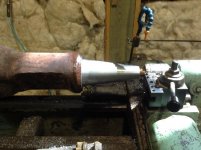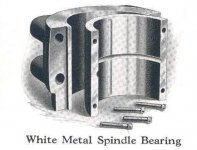idacal
Hot Rolled
- Joined
- Aug 9, 2011
- Location
- new plymouth id
I have been looking at getting a newer lathe but everything Im looking at that has a 11' bed is serious money and I have used the length several times. I Like the machine except for when I try to do a bearing fit. the things that are wrong with it are : when doing a course thread (5 to 7threads per inch) Im having to set my cutter quite a bit from a 90 to the material otherwise it looks like Im cutting buttress threads the tail stock is .005 low and trying to part chatters like a 2 year old. I have learned to work through everything but the bearing fits I have never hit 2 of them in a row even following all the advice thats been given here. brink at the wrong time and its gone I only use this lathe a couple times a month so I would hate to have a 10000.00 lathe sitting in the shop for personal use.
Alright thats the back ground what kind of babbit would be used? I can pick up some grade 7 for about 2.00 per pound or order some other grade about 6 per pound. I have poured zink and babbit before but not on something that needed these tolerances. I was thinking of building a jig to pour the shells then turn them out on a different lathe. just need advice. pictures, couple of picks rethreading cable tool bit 15" bit
Alright thats the back ground what kind of babbit would be used? I can pick up some grade 7 for about 2.00 per pound or order some other grade about 6 per pound. I have poured zink and babbit before but not on something that needed these tolerances. I was thinking of building a jig to pour the shells then turn them out on a different lathe. just need advice. pictures, couple of picks rethreading cable tool bit 15" bit






